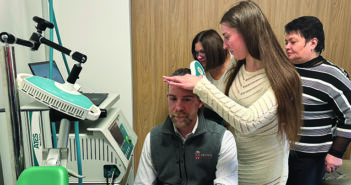The first recorded instance of skin cancer comes from 1600 BCE in an ancient Egyptian text called the Edwin Smith Papyrus. The cancer was treated using cauterization with a tool called the “fire drill.”
In our quest for cancer-free skin, modern-day humans have tried equally inventive tools. But perhaps one of the most important is carbon dioxide: not the gas, but the solid.
In 1907, a physician named William A. Pusey began using CO2 to help treat skin cancer. In the first known use of cryotherapy, he was able to freeze off epithelial skin cancer nodes by applying solid carbon dioxide snow. A few years later, the practice became widespread to get rid of lesions, warts, and more. Solid CO2 was even popular for things like tumors on the bladder.
In the 1950s, practitioners shifted from carbon dioxide to liquid nitrogen, which is now standard practice in cryotherapy. Physicians also use it to deliver low temperatures in a variety of dermatologic procedures like cryopreservation.




